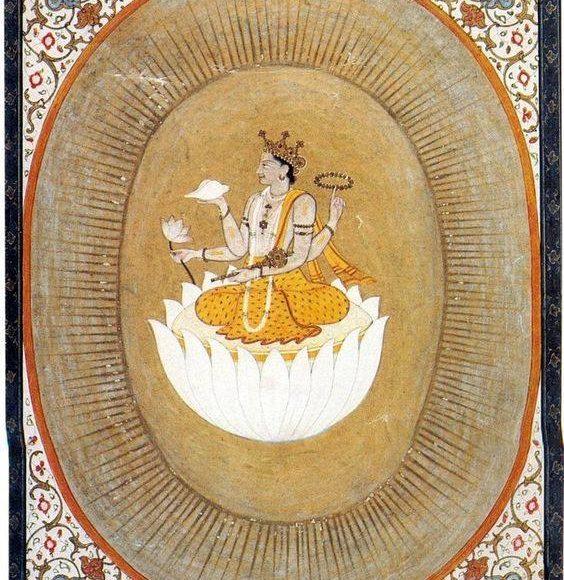COSMIC EGG (HIRANYAGARBHA) The True Lord created the world with his own hands. He broke the Cosmic Egg into two parts. He united the ends of both the parts, and separated them from each other from the middle. (The middle portion became the space). In this way he made the earth and the sky as places for living. He created day and night and also fear and love.
He Who has created, Perceives His creation, there is no other Creator. (Bilawal M. l, Thitli, p. 839) The above reference is a pointer to the Cosmic Egg or Hiranyagarbha, which is a name for Brahma, because he is said to have been born from the Golden Egg.Guru Nanak Dev has rejected the myth given in the 121st hymn of the tenth book of Rig Veda, wherein it is stated that Brahma, the Lord of all beings upholds heaven and earth, and gives life and breath. According to this hymn, Brahma is the god of all gods and all the gods obey his commands. Guru Nanak Dev does not consider this Great god as Brahma, but only the Transcendental and Immanent Brahman.
References :
1. Kohli, Surindar Singh (ed), Dictionary of Mythological References in Guru Granth Sahib, 1993
Hiranyagarbha in Hindu Mythology
Hiranyagarbha, meaning “Golden Womb” or “Cosmic Egg,” is a profound concept in Hindu cosmology and philosophy. It symbolizes the origin of the universe and the source of all creation. Here are its key aspects:
Vedic Origins:
- Hiranyagarbha is mentioned in the Rigveda (10.121), where it is described as the primordial entity from which the cosmos emerged. It is often associated with Prajapati, the creator deity.
- The hymn refers to Hiranyagarbha as the “golden embryo” that floated in the cosmic waters before creation, embodying the potential for all existence.
Creation Myth:
- According to Hindu texts, the universe began with the formation of the Cosmic Egg, which contained all the elements of creation. When it split, it gave rise to the heavens (Svarga) and the earth (Prithvi).
- Hiranyagarbha is also linked to Brahma, the creator god, who is said to have emerged from the golden egg to initiate the process of creation.
Symbolism:
- The Cosmic Egg represents unity, potential, and the cyclical nature of creation, preservation, and dissolution. It is a metaphor for the interconnectedness of all existence.
Philosophical Interpretations:
- In the Upanishads, Hiranyagarbha is equated with the universal soul (Brahman), emphasizing its role as the essence of all beings and the universe.
Hiranyagarbha in the Guru Granth Sahib
In Sikhism, the concept of Hiranyagarbha is acknowledged but reinterpreted to align with Sikh philosophy. It is referenced metaphorically to convey spiritual truths:
Key Reference:
- In Bilawal M. 1, Thitli (p. 839), Guru Nanak describes the creation of the universe in terms reminiscent of the Cosmic Egg:
- “The True Lord created the world with His own hands. He broke the Cosmic Egg into two parts… He made the earth and the sky as places for living.”
- This passage reflects the Sikh understanding of creation as an act of the formless Creator (Ik Onkar), transcending mythological narratives.
Rejection of Mythological Deities:
- Guru Nanak critiques the idea of Brahma as the ultimate creator, emphasizing instead the transcendental and immanent nature of the one Creator. The Sikh perspective focuses on the formless divine rather than anthropomorphic deities.
Philosophical Context:
- The reference to Hiranyagarbha in the Guru Granth Sahib serves as a metaphor for the divine act of creation, highlighting the unity and omnipresence of God.
Confluence of Traditions
While Hinduism venerates Hiranyagarbha as the source of creation, Sikhism uses the concept to emphasize the transcendence of the Creator beyond mythological constructs. Both traditions, however, celebrate the interconnectedness and divine essence of the universe.



